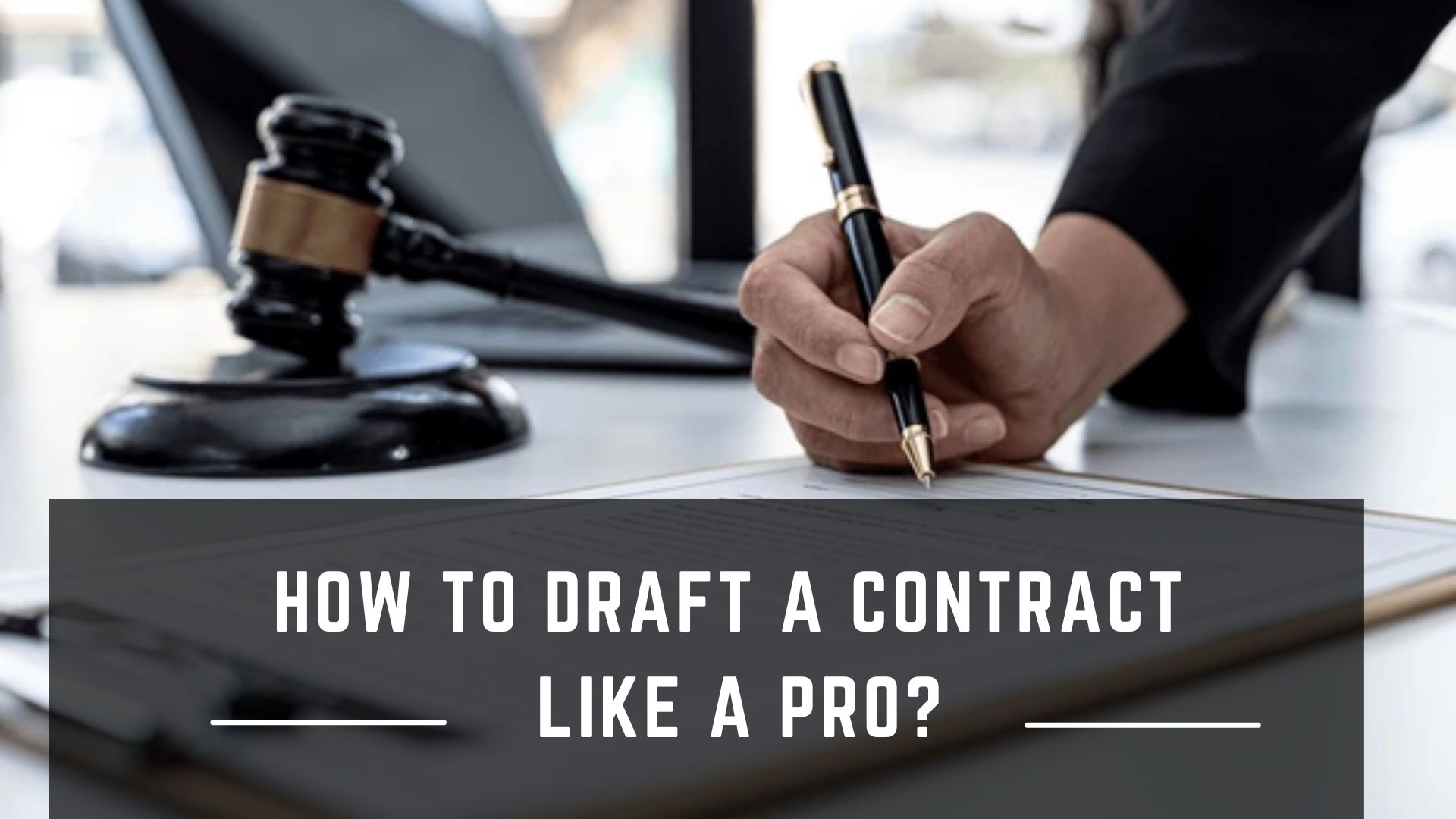Writing a legally binding document requires careful consideration of every word, clause, and structure. In this guide, we’ll take you through the intricate steps of contract drafting. From defining terms to ensuring enforceability, here’s how to draft a contract that stands the test of time.
What is Contract Drafting?

Contract drafting is the process of creating legal documents outlining the terms and stipulations of an agreement. Before entering any business partnership, a comprehensive legal document is vital to insist on performance and compliance in the future.
With a legally binding document, companies can ensure conformance to all their needs and demands. That is why the wording and content of a document are so crucial. Any error or mishap in contract drafting can lead to the loss of time, revenue, and credibility.
Prioritising contract drafting by leveraging data secures the legal agreement. Moreover, executed contracts empower businesses to make data-driven decisions.
How to Draft a Contract?
Despite their importance, writing a contract is a challenging feat, especially for complex situations. The process involves several departments, parties, and stakeholders. Getting all their input and approval to reach an agreement can be challenging. Here’s how to draft a contract:
Essential Elements of a Valid Contract
- Introduction and Parties Involved: The first step in drafting a contract is to identify the parties involved. This includes providing the full legal names and addresses of all parties.
You will also need to include a brief introduction outlining the purpose of the contract and the relationship between the parties. This sets the foundation for the rest of the document and ensures parties are on the same page.
- Definitions and Interpretations: Clarity is key when it comes to contract drafting. Contractual agreements must define all essential terms in the document to prevent future misunderstandings or confusion.
It guarantees all parties understand the wording and parameters of the agreement. Including an interpretation clause can help clarify the meaning of terms in the context of the contract.
- Rights and Obligations of Each Party: Contracts must outline the rights and obligations of each party involved. This section should clearly define what each party is responsible for and any limitations or restrictions.
By clearly outlining these terms, both parties can ensure that they are fulfilling their end of the agreement and avoid any potential disputes in the future.
- Payment Terms and Conditions: During the drafting process, contracts must outline how and when payments will be made, including the amount, method of payment, and any applicable late fees or penalties. The specificity helps to avoid confusion or disagreements regarding payment obligations.
- Termination and Renewal Provisions: Termination and renewal provisions outline the circumstances under which the parties can end the contract and the conditions for renewal or extension of the agreement. By clearly defining these provisions, all parties can comprehend their rights and obligations if the contract needs to be ended or renewed.
- Dispute Resolution Mechanisms: Disputes are an inevitable part of any business relationship. That is why including a section on dispute resolution mechanisms in a contract is crucial. It dictates how parties can resolve their disputes through mediation, arbitration, or litigation.
By including these provisions in the contractual agreements, parties can avoid costly and time-consuming legal battles in the event of a disagreement.
Writing a Contract

- Drafting Unambiguous Clauses: One of the most crucial aspects of drafting a contract is ensuring that the clauses are unambiguous and clearly define the rights and obligations of each party involved. Ambiguity in contract language can lead to misunderstandings and disputes down the line, so it’s essential to be as precise as possible.
When drafting clauses, avoid using vague language or terms. Instead, be direct in your wording. Consider all possible scenarios and ensure that the language used leaves no room for interpretation. If necessary, seek legal advice to ensure clauses are airtight and legally enforceable.
- Using Standardised Language and Templates: Drafting contracts from scratch takes time and requires legal knowledge. By using standardised templates, businesses can save time and resources by having a solid foundation to work from. It speeds up the contract drafting process and reduces legal costs.
Organisations can ensure consistency in their agreements. They can establish clarity and uniformity in the terms and conditions, making it easier for all parties to understand their rights and obligations.
Standard clauses and templates compiled by legal professionals help to ensure that their contracts are legally sound and meet the requirements, reducing the risk of legal challenges in the future. However, it’s essential to customise the template to fit the specific needs of your agreement. They must review and edit the template to reflect the unique terms and conditions.
- Using Boilerplate Clauses: Boilerplate clauses are standardised provisions that are common in legal agreements. While they may seem routine and unimportant, these clauses protect the rights and clarify the terms of the contract. Having pre-approved boilerplate clauses at hand can fast-track the drafting process. Some popular boilerplate clauses include:
- Governing Law: This clause specifies which state’s laws will govern the interpretation and enforcement of the agreement.
- Severability: This clause ensures that if one part of the agreement is invalid, the rest remains in effect.
- Force Majeure: This clause outlines what happens if unforeseen events, such as natural disasters or political unrest, prevent one party from fulfilling their obligations.
- Waiver: This clause states that failing to enforce one provision does not waive the right to enforce other provisions in the future.
Finalising the Contract

Businesses must take steps to ensure they’re protecting the interests of all parties involved before executing a contract and making the terms legally binding. Going through the document thoroughly for discrepancies, unfair terms, or errors is crucial for effective contract drafting.
One of the most essential steps in finalising a contract draft is seeking legal review and approval. Legal experts can help ensure that the contract complies with all relevant laws and regulations and protects the rights and interests of the parties involved. They can help identify any potential legal issues or loopholes in the contract. Consequently, they can resolve the problems before signing the agreement.
Conclusion
Contracts outline the terms of the business agreement, outlining each party’s responsibilities and rights. It enables parties to understand what they’re agreeing to, including the deliverables, durations, payments, liability, etc. However, drafting a contract can be daunting, filled with legal jargon and potential pitfalls.
You can use contract management software tools to streamline the entire contract lifecycle, including drafting. There are pre-approved templates and clause libraries to fast-track the authoring process. The automated workflows ensure smooth sailing in reviewing contracts. AI can do manual contract tasks in minutes without the risk of human error.
By following these legal drafting tips, you can ensure that your contracts are comprehensive, clear, and enforceable. Understanding how to draft a contract, recognising the importance of each element, and utilising technology can significantly enhance the efficiency and effectiveness of contract drafting.
Whether you’re a seasoned legal professional or a student eager to learn the intricacies of legal agreements, mastering these skills is crucial for successful contract management.





